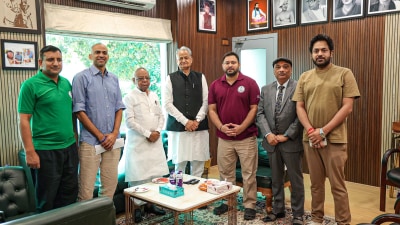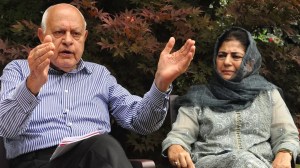Smarting over India n-deal, Pak gets F-16 offer from US
The Bush Administration’s decision to seek Congressional approval last night of the sale of 16 F-16 fighter aircraft for Pakistan is, only in part, a compensation for the American refusal to offer a nuclear deal similar to the one signed with India last July.

The Bush Administration’s decision to seek Congressional approval last night of the sale of 16 F-16 fighter aircraft for Pakistan is, only in part, a compensation for the American refusal to offer a nuclear deal similar to the one signed with India last July.
The US transfer of F-16s is even more tightly linked to the effort by the Bush Administration to get President Pervez Musharraf to keep his promises on curbing the Taliban and Al Qaeda activity on the Pak-Afghan border.
The notification of the F-16 sale to Pakistan followed the visit of the US Secretary of State Condoleezza Rice to Islamabad and Kabul earlier this week.
Amidst the resurgence of the Taliban in Afghanistan and the growing tensions between Kabul and Islamabad, Rice was carefully balancing the competing American interests in Afghanistan and Pakistan. In Kabul, Rice signaled strong support to the government of Hamid Karzai and in Islamabad she tried to dispel the misperceptions that the US is trying to cut and run from Afghanistan.
At the very beginning of the second term of the Bush Administration, Washington decided to resume F-16 sales to Pakistan. When she came to New Delhi in March 2005, Rice conveyed the decision on F-16s to Pakistan.
At the same time she had made the first presentation on the prospects for Indo-US nuclear cooperation as well as the US readiness to open the military stores for India. The earthquake in Kashmir last October compelled Musharraf to postpone the acquisition of F-16s. The US and Pakistan had also agreed to scale down the size of the sale from the initial speculation of 78 fighter aircraft to the current 34.
The US move on F-16s might also be a part of the complex bargaining between the Bush Administration and Musharraf on the question of promoting democracy in Pakistan and managing the elections scheduled for 2007.
India was apparently informed about the F-16 decision before it was announced in Washington. The question of the US transfer of F-16s has been in play since Rice visited India and Pakistan in March 2005. Whatever might be the formal reaction of the UPA government to the US decision, the old anxieties on American arms supplies have over the last year been superceded by the scale and scope of the deal on the exclusive Indo-US deal on nuclear energy.
India is also considering the US offer of F-16s and F-18s to the Indian Air Force which is planning to acquire 126 advanced fighter aircraft in the near future. The sale of advanced arms to India has emerged as one element of the expanding Indo-US defence cooperation since Defence Minister Pranab Mukherjee visited Washington in June 2005.
New Delhi is not unaware of the huge difference between the current ambitious nuclear and defence agenda and the proposed sale of F-16s to Pakistan as well as the earlier decision on transferring Harpoon missiles.
Islamabad has been bitterly complaining about the US nuclear discrimination between India and Pakistan. It has also been stepping up pressure on China to respond to the Indo-US nuclear deal by selling additional reactors to Pakistan.
After the House International Relations Committee approved the nuclear legislation last Tuesday, the Pakistan Foreign Office reiterated its concerns on the deal and insisted that the US should have worked out a nuclear “package deal” for both India and Pakistan.





- 01
- 02
- 03
- 04
- 05


























